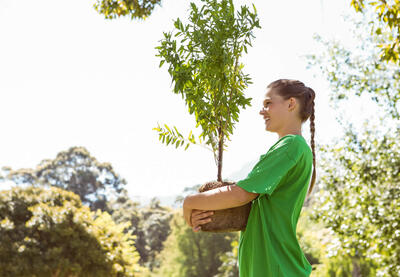Editor’s note: This story references the previous TT Perspectives for a Diverse America tool. For information on the current LFJ Learning Plan Builder, click here.
We were having a classroom discussion when things got really interesting: A student, almost out of nowhere, mentioned that five people had been shot in our city over the weekend. As the facilitator of the discussion, I decided to connect his comments to our conversation: “Is violence natural?” I asked. This question sparked a deep dialogue about how weapons and anger relate to our views of the place people have in nature. We had started the class by talking about nature as trees and birds and how our ideas of nature were formed by experiences at parks and in the woods, but this turn in the discussion got us below the surface to a level where we could analyze rather than just describe. This level of critical thinking was essential to meeting our course objective: to assess how people’s ideas about nature have shaped the past, inform our present and will create our future.
The course I teach, Global Environment, includes reading Guns, Germs and Steel by Jared Diamond and several other texts about the general role of European imperialism in shaping the world we live in today. These readings offer important ideas for us to think about, but they haven’t really engaged students in the past. A recent course I took inspired me to shift the focus from the readings and content to essential questions designed to address the Learning for Justice Social Justice Standards related to identity and diversity. Through these questions, students explored why they didn’t think people and the things we make—like guns—are part of nature, how other cultures think about nature and where students’ own ideas come from. This approach provided an opportunity for critical and creative thought, as well as a motivation to explore the content from different perspectives.
During the course I took, we dove deep into Learning for Justice’s curricular tool, Perspectives for a Diverse America. Studying critical literacy with this tool in mind led me, for the first time in my career as a science teacher, to make a conscious effort to include diverse voices and ways of knowing in my daily practice. Most of my ideas about nature had come from reading authors like John Muir and E.O. Wilson—after all, my teachers had told me that these were the naturalists—and I had never critically examined the fact that all of them look more like me than my students.
But when I made the effort to include articles that discussed nature from scientific, artistic and traditional ways of knowing, written by authors of different cultural backgrounds, we all became immersed in the complexity of varying perspectives and deeper knowledge. Students appreciated not reading an academic text written by yet another white man. Lucille Clifton’s poem “The Earth Is a Living Thing” mingled in their minds with Raymond Pierotti and Daniel Wildcat’s Traditional Ecological Knowledge: The Third Alternative. Pierotti and Wildcat’s discussion of the Rock Creek and Oglala Lakotas’ perspectives on nature shared space in students’ brains with the philosophies of the Akamba and Chagga people of eastern Africa, presented in Bakanja Mkenda’s “Environmental Conservation Anchored in African Cultural Heritage.”
The week ended with a student-led discussion, and we all connected American Indian and African ideas that humans are threads in a web of life. We recognized that we can follow the thread of violence through evolutionary history back to the first time two animals fought for resources. We reflected on how Muslims and Christians agree that nature was God’s creation and that people have the obligation to be stewards of it. We accepted that our American ideas are formed by the collision of European, African and Indigenous cultures in the age of imperialism and colonization. Our group realized that we connected with the ideas of our African ancestors more than our European ones.
We didn’t agree on what nature is or our place in it, but there was general agreement around the table when one student said senior year was way too late to have thought about these things for the first time.
Widmaier is an instructional coach and science teacher at World of Inquiry School #58 in Rochester, New York. He is also a recipient of the 2016 Teaching Tolerance Award for Excellence in Teaching.
